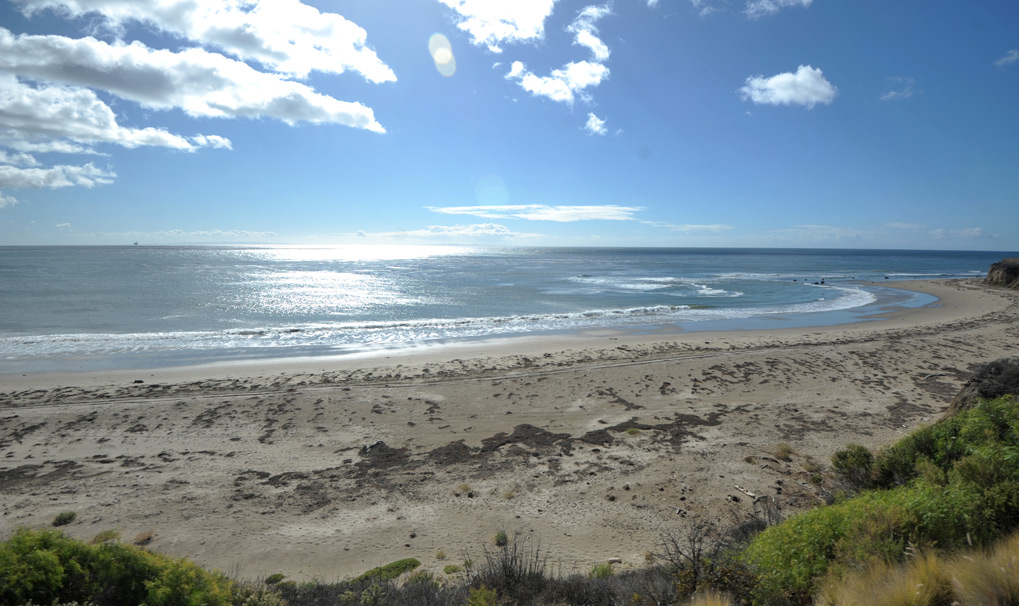Will Hollister Ranch Access Deal Hold Up Under Public Scrutiny?
Commissioners with State Agency May Reconsider Beach Access Settlement with Santa Barbara County Gated Community

If last week’s California Coastal Commission hearing on the public-access settlement between the Hollister Ranch Owners’ Association (HROA) and the State of California is any indication, the issue is far from settled. Poised to enter a legal fray as complicated as it is controversial, a band of Santa Barbara attorneys and coastal-access advocates wasted little time at the Coastal Commission’s July 13 public hearing in Santa Cruz. Among other red flags, they said, the settlement agreement puts beach-goers in harm’s way, extinguishes the possibility of visitor access along a key overland route, and signals a misuse of public funds.
The issue stems from a Santa Barbara Superior Court ruling from May, when, after five years of litigation, HROA and two state agencies — the Coastal Commission and the Coastal Conservancy — announced that the public would be allowed daytime access to Cuarta Beach inside the gated 14,500-acre ranch, but only by soft-bottom boat or personal watercraft. By ocean, Cuarta Beach is roughly three miles west of Gaviota State Beach. The settlement would also require the Coastal Conservancy to give up any rights it has to provide the public overland access to the same beach, as envisioned nearly 40 years ago when the Metropolitan YMCA of Los Angeles sought to build an overnight camp on a nearby Cuarto Canyon property it owned at the time. Santa Barbara Superior Court Judge Colleen Sterne has tentatively approved the settlement but will also allow qualified parties to intervene in the case — by July 23 — before her final decision in September.
At last week’s Coastal Commission meeting, Executive Director Jack Ainsworth and Mary Small, the Coastal Conservancy’s chief deputy executive officer, laid out the backstory and explained that their agencies sympathize with the more than 1,300 letter-writers who have criticized the settlement as a one-sided sweet deal for Hollister Ranch. However, added Small, the original plan required of the YMCA’s offer to dedicate public access was limited in scope.
“I understand that the settlement does not provide the level of access that the public expects and deserves,” she said. “The conservancy supports implementing broader public access [at Hollister Ranch]. Unfortunately, even with the rights we hold from the YMCA’s offer to dedicate, we do not have the property rights that we need to implement that.” Small added that the original plan, which the settlement would extinguish, allowed for 50 visitors daily from Gaviota State Beach — via a shuttle operated by the YMCA — along the ranch’s main road to a walking path through a concrete culvert that, she emphasized, is both dark and slippery wet.
Attorney Marc Chytilo took issue with that. “I would far prefer to take my 90-year-old mother through that tunnel than … put her on a kayak and paddle her for three miles and asking her to land on that beach,” said Chytilo, representing a group of nonprofits questioning the settlement. “This access by sea puts the public in harm’s way.”
Teamed up with Chytilo, Susan Jordan with the California Coastal Protection Network has taken a particular interest in Hollister Ranch’s so-called in-lieu fee program, in which any owner seeking to pull a coastal-development permit must pay $5,000 into a fund — overseen by the Coastal Conservancy — to be put toward “a clear and unambiguous” effort on behalf of the general public to create access to Hollister Ranch beaches, she said. Jordan’s contention was that Hollister Ranch owners have been doing their part for decades by paying into the fund as they constructed estates, guest houses, garages, and barns. “But what about public access?” she asked. “Still none.” She put it to the Coastal Commission to certify that the program’s public-access provisions have been met. “I do not believe you can make that finding,” she said. Jordan also expressed great interest in learning that commissioners Aaron Peskin and Carole Groom had recently appealed a pair of coastal-development permits — one for a single-family home, the other for a bridge — pulled by the present-day owners of the YMCA’s original Cuarta Canyon property.
Jordan and Chytilo’s testimony, among that of others, including two women who had driven seven hours from Riverside County to speak for three minutes about their love of California’s coast, gave pause to at least a few commissioners. “There are a lot of things pointed out by the public that make me feel uneasy about the settlement.” said Commissioner Mark Vargas. “I sympathize with the public’s input on this, and I’d like to have a discussion with staff to contemplate … how we would go about withdrawing from [this] settlement agreement.”
No public speakers took the podium on behalf of Hollister Ranch or in favor of the settlement agreement.
Editor’s Note: This story was updated on July 17, 2018, and posted on July 20, 2018.



